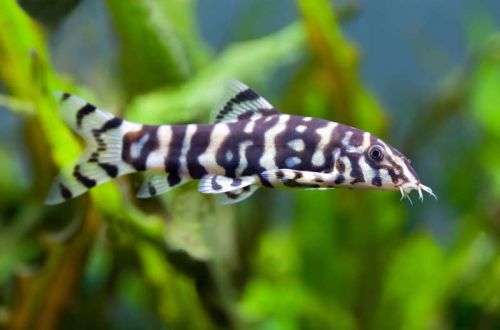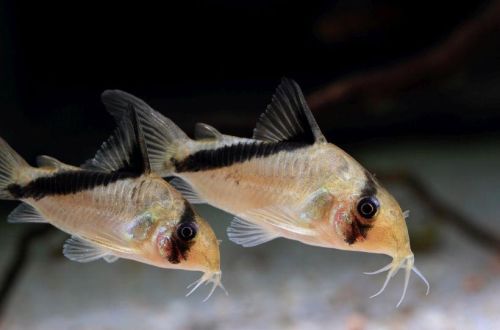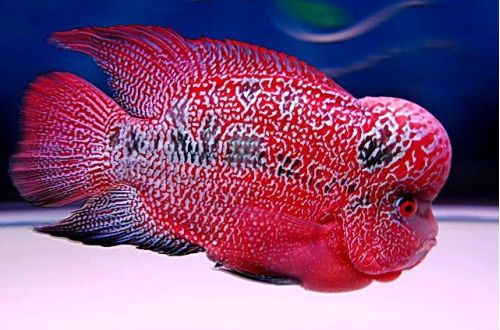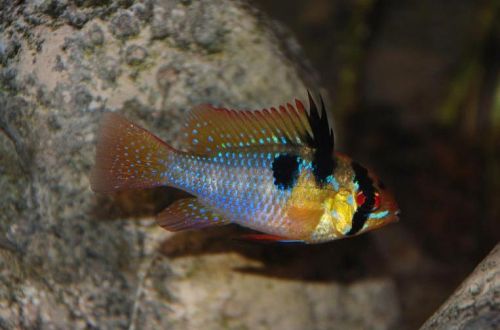
Chromis butterfly
Chromis Butterfly Ramirez or Apistogramma Ramirez, scientific name Mikrogeophagus ramirezi, belongs to the Cichlidae family. A small and bright fish, often kept in a species aquarium, since the selection of optimal neighbors can be problematic due to its modest size. Makes high demands on the quality of water and food, so it is not recommended for beginner aquarists.

Habitat
Distributed in the Orinoco River basin in the subequatorial part of South America on the territory of modern Colombia, Bolivia and Venezuela. It lives in numerous small tributaries and reservoirs, as well as on seasonally flooded plains during high water periods.
Requirements and conditions:
- The volume of the aquarium – from 60 liters.
- Temperature – 22-30°C
- Value pH — 4.0–7.0
- Water hardness – soft (5-12 GH)
- Substrate type – sand
- Lighting – subdued
- Brackish water – no
- Water movement is weak
- Size is about 5 cm.
- Food – live or frozen food
Description
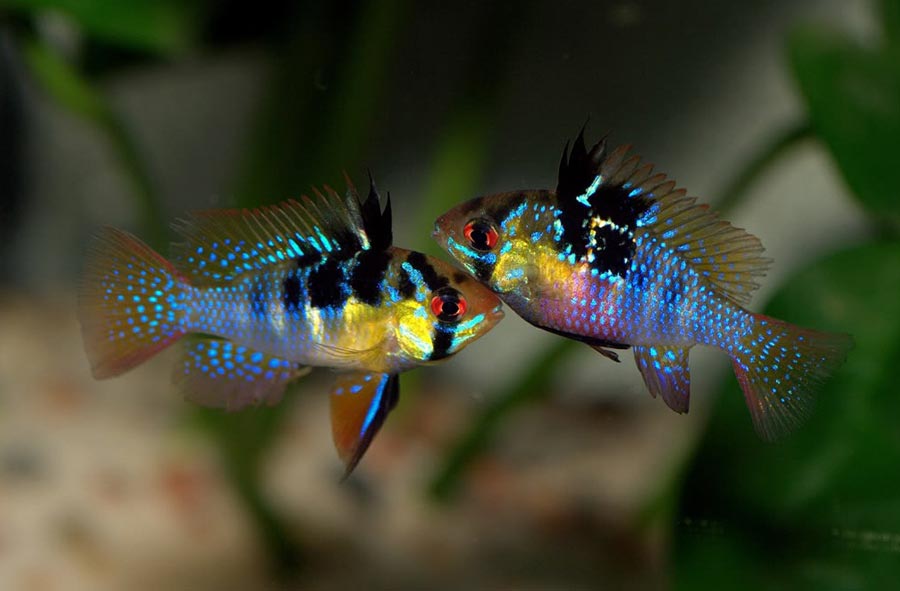
Tall body, in males the second ray of the dorsal fin is slightly longer than the others. Females have a fuller abdomen. The whole body and fins are covered with rows of bright turquoise dots. The abdomen is reddish, in females the color is more intense. The first rays of the dorsal and ventral fins are black. On the head there is a transverse dark stripe that passes through the eye and gills. The eyes are red. There are orange-yellow varieties.
Food
In the wild, they feed on small crustaceans and insect larvae that live in the soil litter. In a home aquarium, it is desirable to feed live food: brine shrimp, daphnia, grindal worm, bloodworm. Frozen food is allowed, but usually at first the fish refuse it, but gradually get used to it and eat it. Dry food (granules, flakes) should only be used as an additional source of food.
Maintenance and care
The design uses a sandy substrate, with roots and branches of trees, snags placed on it, forming shelters in the form of caves, sheds, shaded places. A few flat smooth stones also do not interfere. Fallen dry leaves emphasize the natural look and color the water in a slightly brown color. Plants are recommended both floating and rooting with dense leaves.
Soft, slightly acidic water of high quality and purity, weekly replacement of no more than 10-15% of the volume. Apistogramma Ramirez does not respond well to changes in parameters, and taking into account the supply of meat feed, the risk of water pollution is very high. The substrate is recommended to be cleaned weekly, and after each feeding, remove eaten food particles. Read more about water parameters and ways to change them in the Hydrochemical composition of water section. The set of equipment is standard: filter, lighting system, heater and aerator.
Behavior
Pretty accommodating fish, compatible with many species of similar size. Due to their small size, they should not be kept together with large, territorial or aggressive fish. Young individuals stay in a flock, with age they are divided into pairs and are fixed in a certain territory.
Breeding / breeding
Breeding at home is possible, but strict adherence to water parameters is required, it must be very clean and soft, otherwise a fungus appears on the eggs or they stop developing. Feed fish exclusively with live food. Spawning is desirable to carry out in a separate tank, if there are other types of fish in the general aquarium.
A pair lays eggs on a hard, flat surface: stones, glass, on dense leaves of plants. Young individuals can eat their first offspring, this does not happen with age. The female protects the brood at first. The fry appear after 2–3 days, feed on egg yolk reserves for a week and only then switch to another type of food. Feed in stages as they grow older with ciliates, nauplii.
Diseases
The fish are extremely sensitive to water quality and food quality, non-compliance often leads to hexamitosis. Read more about symptoms and treatments in the Aquarium Fish Diseases section.
Features
- Prefer a diet rich in protein
- High quality water required



